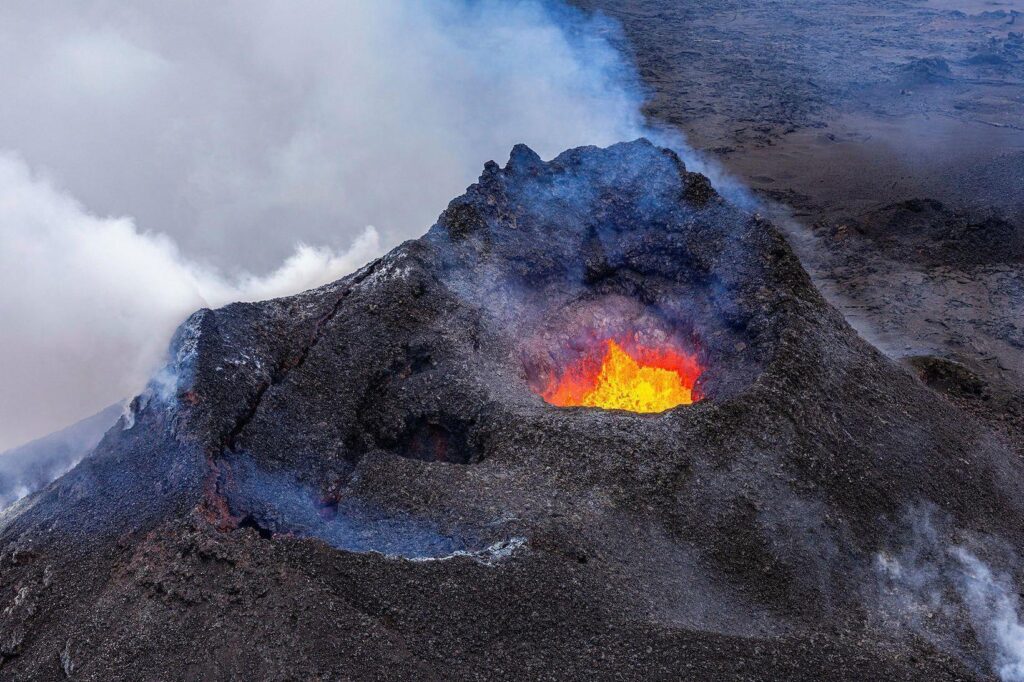Land inflation and magma accumulation beneath Svartsengi continue, though at a slower pace, according to Benedikt Gunnar Ófeigsson, head of deformation measurements at the Icelandic Meteorological Office.
“We’ll just have to wait and see whether this trend continues. There’s still little seismic activity in the area, and we’re essentially in a holding pattern,” Ófeigsson told mbl.is.
By the end of October, roughly 14 million cubic meters of magma had accumulated beneath Svartsengi since the last eruption ended on August 5 — the ninth eruption in the Sundhn úkagígar crater row since the series began in December 2023.
Comparing eruptions since March 2024, the amount of magma released from Svartsengi in each event has varied between 12 and 31 million cubic meters.
Slowing inflation increases uncertainty
Asked about the slowdown in land inflation, Ófeigsson explains:
“It means that some deep-seated inflow is decreasing over time and has probably been doing so gradually. This suggests we’re approaching some kind of endpoint — though we don’t know what that means in terms of timing. The slower the inflation, the greater the uncertainty.”
He says that when the activity first began, land inflation was rapid, making it easier to predict that another eruption was near. “Now, nothing is certain. This could end with an eruption — or without one — and it could take weeks or even months before anything happens. We’re simply waiting,” Ófeigsson says.
Two years since Grindavík evacuation
Last Monday, it was exactly two years since residents of Grindavík were forced to evacuate their homes after strong earthquakes struck on November 10, 2023.
By morning, widespread damage was visible: a subsidence valley had formed above the magma intrusion running through the town, splitting roads, pipes, and buildings. The first eruption of the sequence began on December 18.

“We’ve learned a great deal”
“We’ve learned a tremendous amount since these natural disasters began two years ago — and we’re still learning,” says Ófeigsson. “The event has been ongoing this whole time, and it never behaves the same way twice. The intervals between eruptions are lengthening. In the beginning, the activity was concentrated more to the south, but now it’s shifted northward. There’s nothing in the data to tell us how this will continue.”
He notes that the area is the most closely monitored spot in Iceland, with an expanding network of instruments and close collaboration between the Icelandic Meteorological Office, the University of Iceland, and international researchers keeping a constant watch on developments.
Source: Mbl.is




